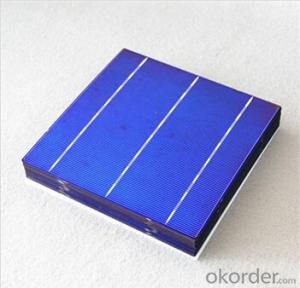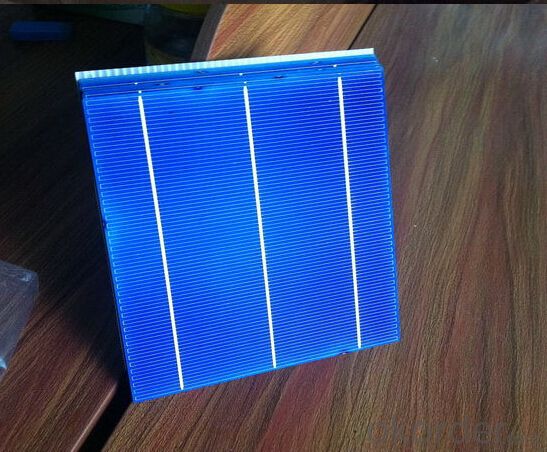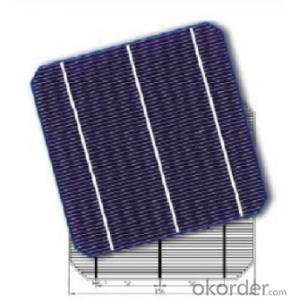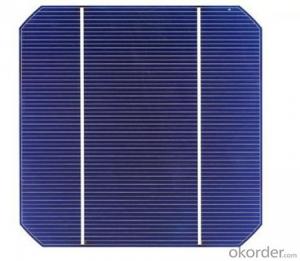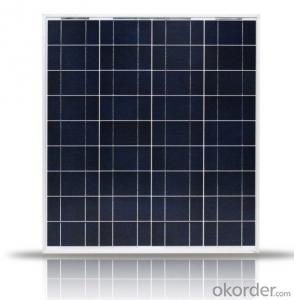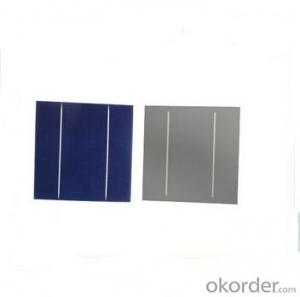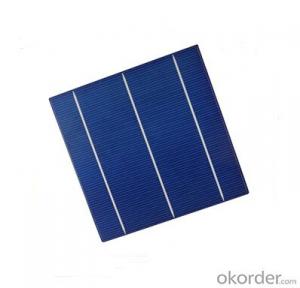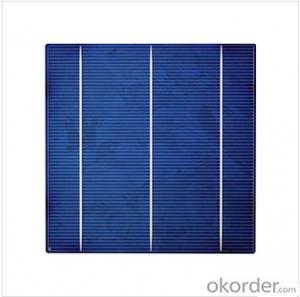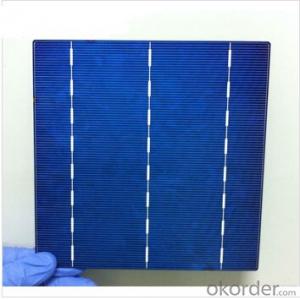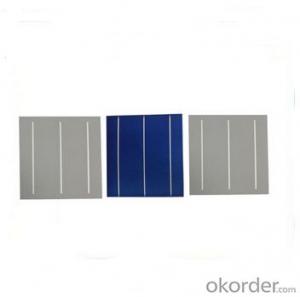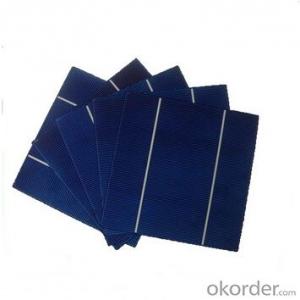Solar Cells Free Polycrystalline Solar Cells Series- 17.00-18.20% 156mmx156mm±0.5mm
- Loading Port:
- Shanghai
- Payment Terms:
- TT OR LC
- Min Order Qty:
- 3000 pc
- Supply Capability:
- 300000 pc/month
OKorder Service Pledge
OKorder Financial Service
You Might Also Like
Solar Cells:
Solar cells is made by solar wafer, it has three categories of solar cell right now, monocrystalline polycrystalline and thin film,These cells are entirely based around the concept PN junction, which is the critical part of solar module, it is the part that can convert the light energy into electricity, the thickness is from 180um to 200um, with even busbars to conduct electricity, textured cell can decrease diffuse reflection; they are often electrically connected and encapsulated as a module. Photovoltaic modules often have a sheet of glass on the front (sun up) side, allowing light to pass while protecting semiconductor wafers from abrasion and impact due to wind-driven debris, rain, hail, etc. Solar cells are also usually connected in series in modules, creating an additive voltage. Connecting cells in parallel will yield a higher current;With high quality and stable quality. Our Cells can greatly improve the performance of Solar Modules.
Features:
1. High conversion efficiencies resulting in superior power output performance.
2. Proven long term mechanical stability of silicon
3. Make of highly purified poly silicon
4. Three bus bars for reduced series resistance and improved module and cell efficiency
5. Blue anti-reflecting coating ensures improved light absorption and increased efficiency
6. Acid texturization offers a uniform appearance and virtually invisible crystal structure
Solar Cells Advantage:
1. Tire-1 Solar Cells’ Manufacturer Quality Guarantee. With a complete and sophisticated quality government system, our Quality Management have arrived world’s leading place. Customer can receive Tire-1 Cells Maker’s Quality Standard Products.
2. Trusted Warranty. We can supply trusted after-sales service to our customer. If our cells are found not in conformity to the specification of manufacturer, or should the inspected quantity found in shortage, or should the packing found damaged, the buyer has the right to claim to the seller. The claim, if any, should be presented to seller within 30 days after cargo's arrival date to the port, together with related inspection report and photos issued and provided by a reputable independent surveyor such as SGS.
3. World’s Leading Manufacturer Equipment. We imported the newest and leading production equipment from abroad. Advanced equipment can guarantee the stable quality of cells. Auto production line can also save labor cost which will further cut our production cost.
Specifications:
Dimension | 156mmx156mm±0.5mm |
Thickness(Si) | 180µm ±20µm, 200µm±20µm |
Front | Blue silicon nitride anti-reflective coatings 1.4mm silver busbar |
Back | Full-surface aluminum back-surface field 2.5mm(silver/aluminum discontinuous soldering pads) |
Efficiency code | 182 | 180 | 178 | 176 | 174 | 172 | 170 | |
Efficiency | Eff(%) | 18.20 | 18.00 | 17.80 | 17.60 | 17.40 | 17.20 | 17.00 |
Power | Ppm(W) | 4.43 | 4.38 | 4.33 | 4.28 | 4.23 | 4.19 | 4.14 |
Max. Power current | Ipm(A) | 8.26 | 8.22 | 8.17 | 8.12 | 8.08 | 8.05 | 7.99 |
Short Circut Current | Isc(A) | 8.71 | 8.68 | 8.63 | 8.60 | 8.56 | 8.53 | 8.49 |
Max. Power Voltage | Vpm(V) | 0.536 | 0.533 | 0.530 | 0.527 | 0.524 | 0.521 | 0.518 |
Open Cirtuit Voltage | Voc(V) | 0.634 | 0.632 | 0.630 | 0.627 | 0.625 | 0.622 | 0.620 |
Efficiency code | 168 | 166 | 164 | 162 | 160 | 158 | 156 | |
Efficency | Eff(%) | 16.80 | 16.60 | 16.40 | 16.20 | 16.00 | 15.80 | 15.60 |
Power | Ppm(W) | 4.09 | 4.04 | 3.99 | 3.94 | 3.89 | 3.85 | 3.79 |
Max. Power Current | Ipm(A) | 7.94 | 7.90 | 7.85 | 7.80 | 7.75 | 7.71 | 7.68 |
Short Circuit Current | Isc(A) | 8.45 | 8.41 | 8.38 | 8.35 | 8.32 | 8.25 | 8.22 |
Max. Power Volgate | Vpm(V) | 0.515 | 0.512 | 0.509 | 0.507 | 0.505 | 0.504 | 0.502 |
Open Circut Voltage | Voc(V) | 0.618 | 0.616 | 0.614 | 0.613 | 0.612 | 0.610 | 0.609 |
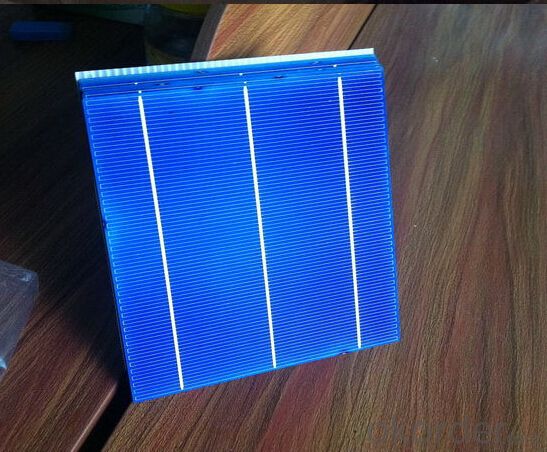
FAQ
We have organized several common questions for our clients,may help you sincerely:
①What price for each watt?
It depends on the efficiency of the solar cell, quantity, delivery date and payment terms.
②How long can we receive the product after purchase?
In the purchase of product within three working days, We will arrange the factory delivery as soon as possible. The pecific time of receiving is related to the state and position of customers.Commonly 7 to 10 working days can be served.
③Can you provide the peripheral products of the solar panels, such as the battery, controller, and inverter? If so, can you tell me how do they match each other?
Yes, we can, we have two companies for solar region, one is CNBM International, the other is CNBM engineering Co.
We can provide you not only the solar module but also the off grid solar system, we can also provide you service with on grid plant.
④What is your warranty of solar cell?
Our product can promise lower than 0.3% open box crack, we support claim after opening the box if it has crackm color difference or sth, the buyer should give pictures immediately, we can not accept the claim after the solar cell has assembled to solar panel.
• Timeliness of delivery
• ⑤How do you pack your products?
We have rich experience on how to pack the solar cell to make sure the safety on shipment, we could use wooden box or pallet as buyer's preference.
- Q: How do solar cells perform in areas with high humidity?
- Solar cells generally perform slightly less efficiently in areas with high humidity. The moisture in the air can create a barrier between the sunlight and the solar cells, reducing their ability to convert sunlight into electricity. However, advancements in solar cell technology have improved their performance in high humidity conditions, making them still viable and effective in such areas.
- Q: How do solar cells perform in areas with high levels of water pollution?
- Solar cells may be adversely affected in areas with high levels of water pollution. The presence of pollutants, such as chemicals or particles, in the water can reduce the amount of sunlight reaching the solar cells, thereby decreasing their efficiency. Additionally, water pollution can lead to the accumulation of dirt, debris, or algae on the surface of the solar panels, further diminishing their performance. Regular cleaning and maintenance are essential in such areas to ensure optimal functioning of solar cells.
- Q: Can solar cells be used in military vehicles or equipment?
- Yes, solar cells can be used in military vehicles or equipment. They provide a sustainable and efficient power source, reducing the reliance on conventional fuels and batteries. Solar cells can be integrated into various military applications, such as powering communication systems, surveillance equipment, or even charging portable devices. Their use enhances operational efficiency, reduces logistical burdens, and promotes environmental sustainability.
- Q: Are bulk solar cells better than the normal solar cells?
- Bulk solar cells are not absolutely better than normal solar cells, it is decided by what kind of material.
- Q: What is the lifespan of solar cell batteries?
- The lifespan of solar cell batteries can vary depending on several factors, including the quality of the battery, usage patterns, and maintenance. On average, solar cell batteries can last anywhere between 5 to 15 years. However, with proper care and maintenance, some high-quality batteries have been known to last up to 20 years or more.
- Q: What is the role of silicon in solar cells?
- The role of silicon in solar cells is to act as a semiconductor material that can absorb sunlight and convert it into electricity through the photovoltaic effect. Silicon is the most commonly used material in solar cell manufacturing due to its abundance, stability, and ability to efficiently convert sunlight into electricity. It forms the basis of the p-n junction, which allows for the separation and movement of electrons and holes, generating an electric current.
- Q: Is the polymer solar cell the cheapest type among all the different kinds of solar cells?
- Yes, they are cheaper because of lower manufacturing costs.
- Q: Can solar cells be used in sports stadiums or arenas?
- Yes, solar cells can be used in sports stadiums or arenas. They can be installed on the roofs or other suitable areas to generate renewable energy that can be used to power various systems within the facility, such as lighting, scoreboards, or even charging stations for electric vehicles. Additionally, solar cells can help reduce the environmental impact of these large venues by decreasing their reliance on non-renewable energy sources.
- Q: Can solar cells be used in mining operations?
- Yes, solar cells can be used in mining operations. They can provide a sustainable and cost-effective source of energy for various mining activities, such as powering equipment, lighting, and ventilation systems. Additionally, solar cells can be integrated with energy storage solutions to ensure uninterrupted power supply, even in remote mining locations. By using solar cells, mining operations can reduce their reliance on fossil fuels, decrease their carbon footprint, and contribute to a more sustainable mining industry.
- Q: Can solar cells be used for water heating applications?
- Yes, solar cells can be used for water heating applications. Solar thermal panels, also known as solar water heaters, use solar energy to heat water directly. However, it's important to note that solar cells, which convert sunlight into electricity, are typically used to generate electricity rather than directly heating water.
Send your message to us
Solar Cells Free Polycrystalline Solar Cells Series- 17.00-18.20% 156mmx156mm±0.5mm
- Loading Port:
- Shanghai
- Payment Terms:
- TT OR LC
- Min Order Qty:
- 3000 pc
- Supply Capability:
- 300000 pc/month
OKorder Service Pledge
OKorder Financial Service
Similar products
Hot products
Hot Searches
Related keywords
